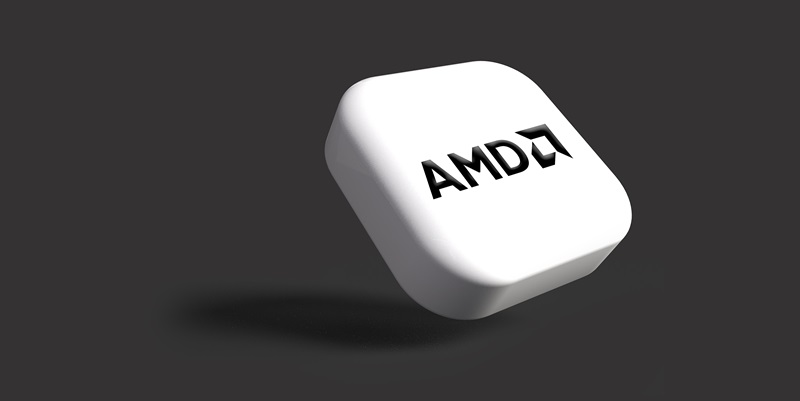The rivalry between Intel and AMD has defined the landscape of the global PC market, capturing the attention of both industry analysts and consumers alike. Intel, despite encountering recent financial difficulties, continues to harness an overwhelming 70% share of the market, dwarfing AMD’s footprint. However, an undercurrent of change is tangible, particularly in the lucrative data center segment, where AMD is steadily capturing ground. This article delves into the multidimensional competition across desktop, mobile, and data center markets, painting a comprehensive picture of this technological titanic struggle.
Data Center Dynamics: Intel’s Volume vs. AMD’s Value
AMD’s Gradual Ascendancy in Data Centers
The data center segment is one of the most vital battlegrounds in the tech arena, and AMD has shown impressive gains in this domain. According to Mercury Research, AMD’s market share in the data center segment has increased by 5.6% over the past year, a growth trajectory that translates to roughly 1% market capture from Intel each quarter. This has been driven largely by AMD’s MI300 CPUs, which have bolstered the company’s revenue by an astounding 115% year-over-year. While volume is crucial, the higher margins associated with AI accelerators like the MI300 have made a significant impact on AMD’s financial performance.
Despite the progress, Intel maintains a commanding lead in terms of volume, controlling 75.9% of the data center market. Yet, the financial outcomes tell another story. Remarkably, both companies reached nearly equal data center sales revenue of around $3 billion in Q2 2024. This revenue parity, even with Intel’s larger market presence, highlights AMD’s focus on high-value AI accelerators, which are clearly paying off. This phenomenon reveals a nuanced competitive landscape, where volume and value strategies intersect in complex ways.
The Dollar Dynamics: Revenue Parity and Future Trends
The nearly identical revenue figures between Intel and AMD in the data center segment underscore a significant shift in market dynamics. Intel, with its sweeping market share, still demonstrates undeniable dominance. However, AMD’s financial gains suggest a shift towards specialization and higher-value products. As AI and machine learning continue to accelerate demand for advanced processors, AMD’s focus on AI-optimized CPUs positions it well for future growth.
Projections indicate that the ongoing demand for AI technologies will intensify, potentially tilting the balance in AMD’s favor. The higher revenue from AI accelerators could increasingly make up for AMD’s smaller market share, allowing the company to invest further in research and development. Consequently, Intel will need to innovate continually to maintain its volume-driven approach or risk losing its expansive market hold. The next few quarters could be pivotal for both companies as they navigate an evolving technological landscape.
The Client Hardware Contest: Desktops and Mobiles
Intel’s Resilient Lead and AMD’s Incremental Gains
Turning to the client hardware market, Intel’s dominance remains evident, yet AMD is making incremental gains, signaling an ongoing tactical contest. For desktop and mobile combined, AMD’s market share increased by 3.8% year-over-year to reach 21.1%, while Intel maintains a commanding 78.9%. Despite AMD losing 1% of the desktop market share to Intel in Q2, it still enjoyed a year-over-year surge of 3.6%. This dichotomy signifies that while Intel remains the leader, AMD’s steady advances are noteworthy and suggest potential shifts in market dynamics ahead.
In the mobile CPU market, AMD’s share experienced a 3.8% increase from the previous year, reaching 20.3%. This consistent upward trend highlights AMD’s ability to gradually encroach upon Intel’s stronghold, even if the strides are less dramatic than in the data center sector. AMD’s incremental gains reflect a strategic focus on performance and value, which resonates well with a growing segment of consumers and enterprise clients. Nevertheless, Intel’s entrenched position continues to exert considerable influence.
The Potential Game-Changer: Ryzen AI 300 CPUs
The rivalry between Intel and AMD has defined the landscape of the global PC market, capturing the attention of both industry analysts and consumers alike. With Intel holding a dominant 70% market share despite recent financial hurdles, its footprint significantly overshadows that of AMD. However, an undercurrent of change is palpable, especially in the lucrative data center segment where AMD is steadily gaining ground. This heightened competition has led to a dynamic interplay across various sectors, including desktop, mobile, and data center markets. AMD’s resurgence, marked by its innovative technologies and competitive pricing, has injected fresh energy into the market, challenging Intel’s long-standing supremacy. Moreover, this evolving battleground is not just about market shares and revenues; it also speaks to the broader technological advancements and shifts within the industry. As both companies continue to innovate, the stakes grow higher, painting a comprehensive picture of this technological titanic struggle that promises to reshape the future of computing.

